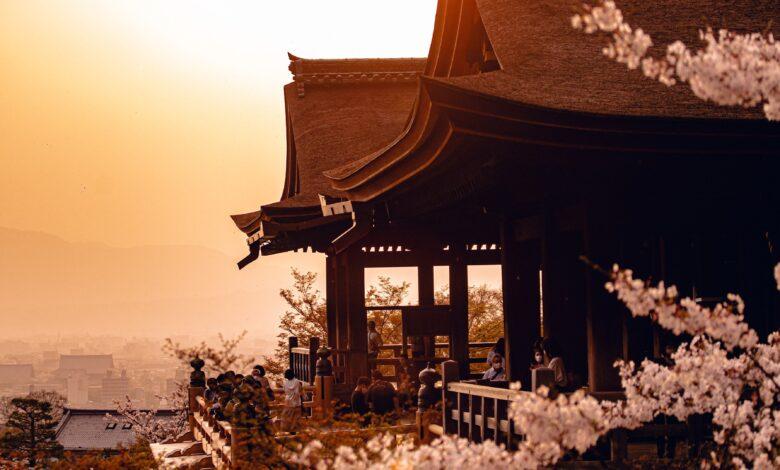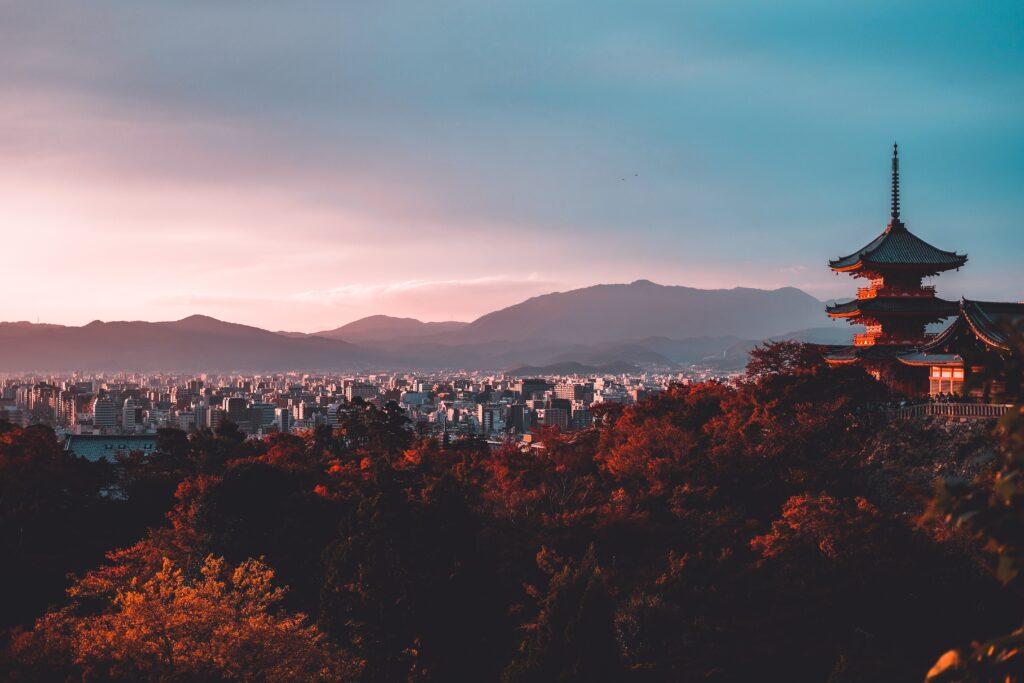🏯 Sacred Sites of Kyoto: Shrines and Gardens 🌸
Explore the Spiritual Beauty of Kyoto's Serene Sanctuaries

Introduction
Nestled in the heart of Japan, Kyoto stands as a testament to the nation’s rich cultural history. As the former imperial capital, this city has witnessed the ebb and flow of centuries, leaving behind a legacy that unfolds through its sacred shrines and meticulously crafted gardens. In this exploration of Kyoto’s sacred sites, we embark on a journey through time, uncovering the spiritual tapestry woven into the city’s landscape. From the iconic Fushimi Inari Taisha to the tranquil beauty of Ryoan-ji’s Zen rock garden, each shrine and garden reveals a unique chapter in Kyoto’s cultural narrative.
Historical Context of Kyoto’s Sacred Sites
Kyoto as the Former Imperial Capital
Kyoto, often referred to as Japan’s cultural heart, served as the imperial capital for over a millennium until the capital was moved to Tokyo in 1868. This historical significance has left an indelible mark on Kyoto’s sacred sites, as they embody the rich tapestry of Japan’s imperial history. The city’s streets and temples whisper tales of emperors and shoguns, offering visitors a profound glimpse into the nation’s storied past. Kyoto’s sacred sites are not mere structures; they are living monuments to the bygone eras that shaped Japan’s identity.
Influence of Shinto and Buddhism on Kyoto’s Cultural Landscape
Kyoto’s cultural landscape is an intricate blend of Shinto and Buddhist influences, two major religious traditions deeply woven into the fabric of Japanese society. Shinto, the indigenous spirituality of Japan, finds expression in the numerous shrines dotting Kyoto. These sacred spaces, dedicated to kami (divine spirits), exude a mystical aura that resonates with centuries-old rituals. Simultaneously, Buddhism’s serene embrace is evident in Kyoto’s temples, where Zen gardens and intricate sculptures invite contemplation and spiritual reflection. The coexistence of these religious influences creates a harmonious synergy, making Kyoto a spiritual sanctuary.
Evolution of Shrine and Garden Architecture Over Centuries
The sacred sites of Kyoto stand as witnesses to the evolution of Japanese architectural brilliance. Shinto shrines, characterized by their vibrant torii gates and simple yet elegant structures, have evolved over the centuries, adapting to changing tastes and architectural trends. Similarly, the meticulously designed Zen gardens surrounding Kyoto’s temples are a testament to the refined aesthetics that have developed over time. These gardens, with carefully arranged rocks, water features, and flora, showcase the evolving philosophy of beauty in simplicity. Kyoto’s sacred architecture is a living encyclopedia of Japan’s aesthetic metamorphosis, a visual journey through the nation’s architectural heritage.
In exploring Kyoto’s sacred sites, one embarks on a pilgrimage through time, where the imperial legacy, spiritual traditions, and architectural finesse converge to create an immersive experience unlike any other.
Kyoto’s Iconic Shrines
Fushimi Inari Taisha: Unlocking the Gates to Spiritual Ascension
Nestled at the base of Inari Mountain, Fushimi Inari Taisha stands as one of Kyoto’s most iconic and revered Shinto shrines. What captures the imagination of visitors worldwide are the thousands of vibrant red torii gates that form a mesmerizing path leading to the sacred Mount Inari. Each gate, donated by individuals and businesses seeking blessings, is adorned with intricate calligraphy. Fushimi Inari Taisha is dedicated to Inari, the Shinto god of rice and prosperity, making it a pivotal site for seekers of good fortune and success. Beyond its religious significance, the shrine offers panoramic views of Kyoto, making it a cultural and visual feast for those who ascend its paths.
Kinkaku-ji (Golden Pavilion): Gilded Elegance Amidst Nature’s Splendor
Kinkaku-ji, also known as the Golden Pavilion, is a breathtaking testament to Kyoto’s architectural opulence. Set against the backdrop of a reflective pond and lush greenery, this Zen Buddhist temple is a dazzling spectacle, its top two floors covered entirely in gold leaf. Originally constructed as a retirement villa for a shogun, Kinkaku-ji later transformed into a Zen temple. Each floor represents a different architectural style, showcasing the seamless integration of nature and human craftsmanship. Surrounded by meticulously landscaped gardens, Kinkaku-ji invites visitors to contemplate the beauty of impermanence, making it a tranquil oasis in the heart of Kyoto.
Yasaka Shrine: Where Tradition and Festivity Converge
Yasaka Shrine, situated in the historic Gion district, encapsulates the dynamic spirit of Kyoto. Dedicated to the Shinto deity Susanoo, the shrine is a hub of traditional celebrations and cultural festivities. Its iconic lantern-lined paths illuminate the shrine’s surroundings during the annual Gion Matsuri, Kyoto’s renowned summer festival. Visitors can witness traditional dance performances and partake in rituals that connect them to Japan’s vibrant cultural heritage. Yasaka Shrine serves as a living testament to the integration of spirituality and cultural expression, making it an indispensable stop for those seeking a multifaceted Kyoto experience.
Tranquil Gardens of Kyoto
Ryoan-ji: Harmony in Stone at Kyoto’s Zen Garden Masterpiece
Ryoan-ji, a Zen temple located in the northwestern part of Kyoto, boasts one of the most famous rock gardens in the world. The simplicity of the garden design, consisting of 15 meticulously placed rocks amidst a sea of raked gravel, invites visitors to contemplate the essence of Zen philosophy. This UNESCO World Heritage Site emanates tranquility, providing a serene space for meditation and introspection. The rocks, carefully arranged in groups, are said to evoke islands in a sea, encouraging a meditative state. Ryoan-ji stands as a testament to the profound impact of minimalism on Japanese garden aesthetics, offering a haven for those seeking harmony amid the whispers of rustling leaves and the quietude of contemplation.
Gion District’s Maruyama Park: Sakura Serenity in the Heart of Kyoto
Maruyama Park, nestled in the historic Gion district, is a verdant oasis that transforms into a breathtaking tapestry of pink during cherry blossom season. Renowned for its picturesque cherry blossom trees, or sakura, Maruyama Park is a haven for hanami, the traditional practice of appreciating the transient beauty of cherry blossoms. The park’s centerpiece, the massive weeping cherry tree, becomes a focal point of admiration and photography during the spring bloom. As petals gently cascade like nature’s confetti, the park exudes an ethereal beauty that captures the essence of the fleeting yet enchanting sakura season, making it a must-visit destination for those seeking tranquility amidst nature’s ephemeral spectacle.
Kodai-ji: Where Time Stands Still in a Sublime Stroll
Nestled in the Higashiyama district, Kodai-ji is a Zen temple renowned for its meticulously landscaped gardens that transport visitors to a bygone era. The temple’s stunning seasonal gardens, featuring meandering paths, tranquil ponds, and vibrant bursts of flora, are a testament to the Japanese concept of shakkei, or “borrowed scenery.” The gardens seamlessly incorporate the surrounding hills and provide a sense of timelessness. Kodai-ji’s night illuminations during certain seasons add a touch of magic, casting a serene glow upon the landscape. Whether in the bloom of cherry blossoms or the vibrant hues of autumn leaves, Kodai-ji offers a sublime stroll through time, inviting visitors to experience the beauty of nature in harmony with architectural artistry.
Rituals and Traditions at Kyoto’s Sacred Sites
Shinto Rituals and Ceremonies: Embracing the Divine in Kyoto’s Sacred Spaces
Kyoto’s sacred sites pulsate with the rhythm of Shinto rituals and ceremonies, offering a profound glimpse into Japan’s indigenous spirituality. Shinto, the way of the gods, permeates every aspect of life in Kyoto. Visitors often witness priests clad in traditional attire performing rituals, such as Kagura dances, purification ceremonies, and prayers for prosperity. The essence of Shinto lies in the belief that spirits, or kami, inhabit natural elements, and these rituals serve as a bridge to connect with the divine. From the sacred precincts of Fushimi Inari Taisha to the tranquil ambiance of Yasaka Shrine, each site echoes with the whispers of ancient rites, immersing visitors in the living tapestry of Shinto traditions.
Buddhist Practices and Meditation in Gardens: Kyoto’s Spiritual Retreats
Kyoto’s sacred sites not only embrace Shinto traditions but also resonate with the meditative practices of Buddhism. In the serene gardens surrounding temples like Ryoan-ji and Kodai-ji, visitors can witness or participate in Buddhist meditation sessions. Zen meditation, known as zazen, is a profound practice where individuals seek enlightenment through focused breathing and mindfulness. The meticulously designed Zen gardens themselves become a canvas for meditation, with carefully arranged rocks and flora providing a backdrop for introspection. Kyoto’s sacred spaces invite visitors to partake in these centuries-old practices, fostering a connection between the individual and the spiritual realm amidst the tranquility of the gardens.
Contemporary Relevance and Preservation Efforts: Sustaining Kyoto’s Spiritual Legacy
As Kyoto evolves into a modern metropolis, the rituals and traditions at its sacred sites maintain a contemporary relevance deeply intertwined with the city’s identity. Preservation efforts play a pivotal role in ensuring that these traditions endure for future generations. Kyoto’s cultural custodians work tirelessly to strike a delicate balance between tradition and modernity, implementing sustainable practices to protect the sanctity of sacred spaces. Initiatives range from architectural restoration to community engagement programs that educate locals and tourists alike about the significance of these rituals. In the face of urban development, Kyoto remains committed to preserving its spiritual legacy, inviting all who visit to become custodians of this timeless cultural heritage.

Personal Experiences and Recommendations
Reflections on the Author’s Visits to the Sites: A Personal Journey Through Kyoto’s Spiritual Tapestry
Having wandered through the enchanting streets of Kyoto and immersed myself in the sacred aura of its sites, each visit has been a pilgrimage of introspection and awe. Fushimi Inari Taisha’s vermilion torii gates created a mystical pathway that felt like stepping into another realm. The serenity of Ryoan-ji’s rock garden stirred a deep sense of contemplation, while the gilded elegance of Kinkaku-ji reflected Kyoto’s historical opulence. These visits have left an indelible mark, intertwining my personal journey with the rich cultural and spiritual history of Kyoto.
Tips for Visitors and Cultural Etiquette: Navigating Kyoto’s Sacred Spaces with Grace
For those planning a pilgrimage to Kyoto’s sacred sites, a few tips can enhance the experience. Respectful attire, often covering shoulders and knees, is advisable, especially when entering temples and shrines. Remember to bow slightly when greeting priests or fellow visitors. Silence is golden, particularly in meditation spaces like Ryoan-ji. To fully appreciate the spiritual ambiance, consider attending a Shinto ritual or participating in a Zen meditation session. Finally, explore during off-peak hours to relish the tranquility of these sites undisturbed.
Hidden Gems and Less-Known Sacred Spots: Unveiling Kyoto’s Spiritual Treasures
Beyond the well-trodden paths lie Kyoto’s hidden gems, waiting to be discovered by the discerning traveler. Venture to the Kitano Tenmangu Shrine, where plum blossoms bloom in breathtaking splendor during early spring, or explore the intimate Gio-ji Temple, surrounded by moss-covered stone paths and nestled in the Arashiyama bamboo forest. The Otagi Nenbutsu-ji Temple surprises with its collection of 1,200 whimsical and unique stone statues, each telling its own story. These lesser-known spots offer a more intimate connection with Kyoto’s spiritual heritage, away from the crowds.
Kyoto’s sacred sites are not mere tourist destinations; they are gateways to a profound spiritual and cultural experience. Through personal reflections, practical tips, and insights into hidden treasures, visitors can embark on a journey that transcends the ordinary, discovering the soulful essence of Kyoto’s timeless allure.
FAQs
Q. What makes Kyoto’s shrines and gardens unique?
A. Kyoto’s shrines and gardens are unique for their seamless blend of Shinto and Buddhist traditions. This fusion creates a spiritual atmosphere that is both enchanting and serene.
Q. How can visitors respectfully experience these sacred sites?
A. Visitors are encouraged to observe silence, follow local customs, and participate in rituals with respect. Removing shoes before entering certain areas is also a sign of reverence.
Q. Are these sites open to the public year-round?
A. Yes, most shrines and gardens are open throughout the year. However, specific events or maintenance may temporarily close certain areas.
Q. Can visitors take photographs within the sacred sites?
A. Photography is generally allowed in outdoor areas, but it’s essential to respect any posted guidelines and avoid disturbing worshippers or the natural environment.
Q. Are there guided tours available?
A. Yes, many sites offer guided tours in multiple languages, providing deeper insights into the history and significance of each location.
Q. What is the best time to visit for a spiritual experience?
A. Early mornings or late afternoons offer a more serene and spiritual atmosphere, allowing visitors to connect with the sacred energy of the sites.
Conclusion
In concluding our journey through Kyoto’s sacred sites, we find ourselves standing at the intersection of tradition and modernity. The shrines and gardens, with their profound historical roots, continue to thrive as living testaments to Japan’s spiritual heritage. As we bid farewell to the enchanting torii gates of Fushimi Inari and the serenity of Kodai-ji’s gardens, we carry with us not just memories but a deeper appreciation for the cultural richness that defines Kyoto. Let the echoes of Shinto rituals and the whispers of rustling leaves in ancient gardens linger, inviting all who visit to immerse themselves in the timeless embrace of Kyoto’s sacred charm.
UP NEXT
https://touristeyes.com/the-majesty-of-iceland-geysers-waterfalls-and-glaciers/





Facebook Comments